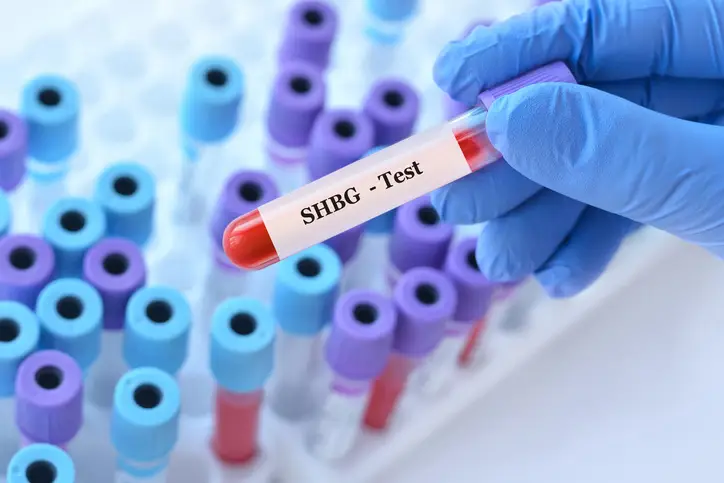If you’re on hormone therapy or considering it, you’ve probably heard about estrogen, testosterone, and progesterone. But there’s another player that doesn’t get as much attention — and it can make a big difference in how you feel. It’s called SHBG, or Sex Hormone Binding Globulin.
At Blue Sky MD, we take SHBG into account when designing your hormone plan, because it can influence everything from your energy levels to your sex drive — even when your labs look “normal.” Here’s what you need to know.
What Is SHBG?
SHBG is a protein made by your liver. It acts like a sponge, grabbing onto estrogen and testosterone in your bloodstream and holding onto them tightly.
When hormones are bound to SHBG, your body can’t use them , and they’re basically in storage. Only free (unbound) hormones are active and able to do their job: helping you feel energetic, focused, strong, and emotionally balanced.
Why Does This Matter for Hormone Therapy?
The way you take your hormones — whether by pill, cream, or pellet — can either increase or decrease SHBG. And that changes how much hormone is actually available to your body. Many forms of birth control can alter your SHBG levels, oral estrogen in most birth control is very high dose and can have a significant negative effect on SHBG levels.
Oral Estrogen (Pills) Increases SHBG — A Lot
When you take estrogen by mouth, it has to go through your liver. In response, your liver makes more SHBG — sometimes two or three times more!
This sounds harmless, but it’s a problem: more SHBG means less free estrogen and testosterone, which can lead to:
- Low libido
- Fatigue
- Mood swings
- Poor muscle tone
- Brain fog
Even if your lab says your hormone levels are “normal,” they may not be working because too much is being locked up by SHBG.
Topical Hormones and Hormone Pellet Therapy Avoids the Liver — and SHBG Spikes
When you use topical hormone creams or get pellet implants, the hormones go directly into your bloodstream and bypass the liver.
That means:
- SHBGdoesn’t increase (or may even go down)
- More of your hormone stays free and active
- You often needlower doses for better results
This is one reason why we prefer hormone pellet therapy at Blue Sky MD. You get steady, consistent hormone levels without the SHBG interference. Topical therapy is also a great option, especially if you’re starting out or prefer something non-invasive.
Real-Life Example
Let’s say two women have the same testosterone level — 30 ng/dL.
- Woman A takes oral estrogen → Her SHBG is high → Only a tiny amount of testosterone is free and usable.
- Woman B uses pellets or cream → Her SHBG stays normal → She feels stronger, sharper, and has a better sex drive.
Same total hormone, totally different experience.
What We Do at Blue Sky MD
When you start hormone therapy with us, we don’t just look at your estrogen or testosterone — we also check your SHBG to see how much hormone is actually getting to your tissues. If your SHBG is too high, we may recommend switching from oral to topical or pellet therapy to get you feeling your best.
Final Thoughts from Dr. LaMond
If you’re frustrated with hormone therapy that doesn’t seem to work — or you’re worried about side effects — it may not be the hormones themselves. It could be the way you’re taking them, and how they’re interacting with SHBG.
That’s why we take a personalized, science-backed approach at Blue Sky MD. By choosing the right delivery method for your body, we help ensure that the hormones you’re taking are actually working for you.
Dr. David LaMond
Medical Director, Blue Sky MD






